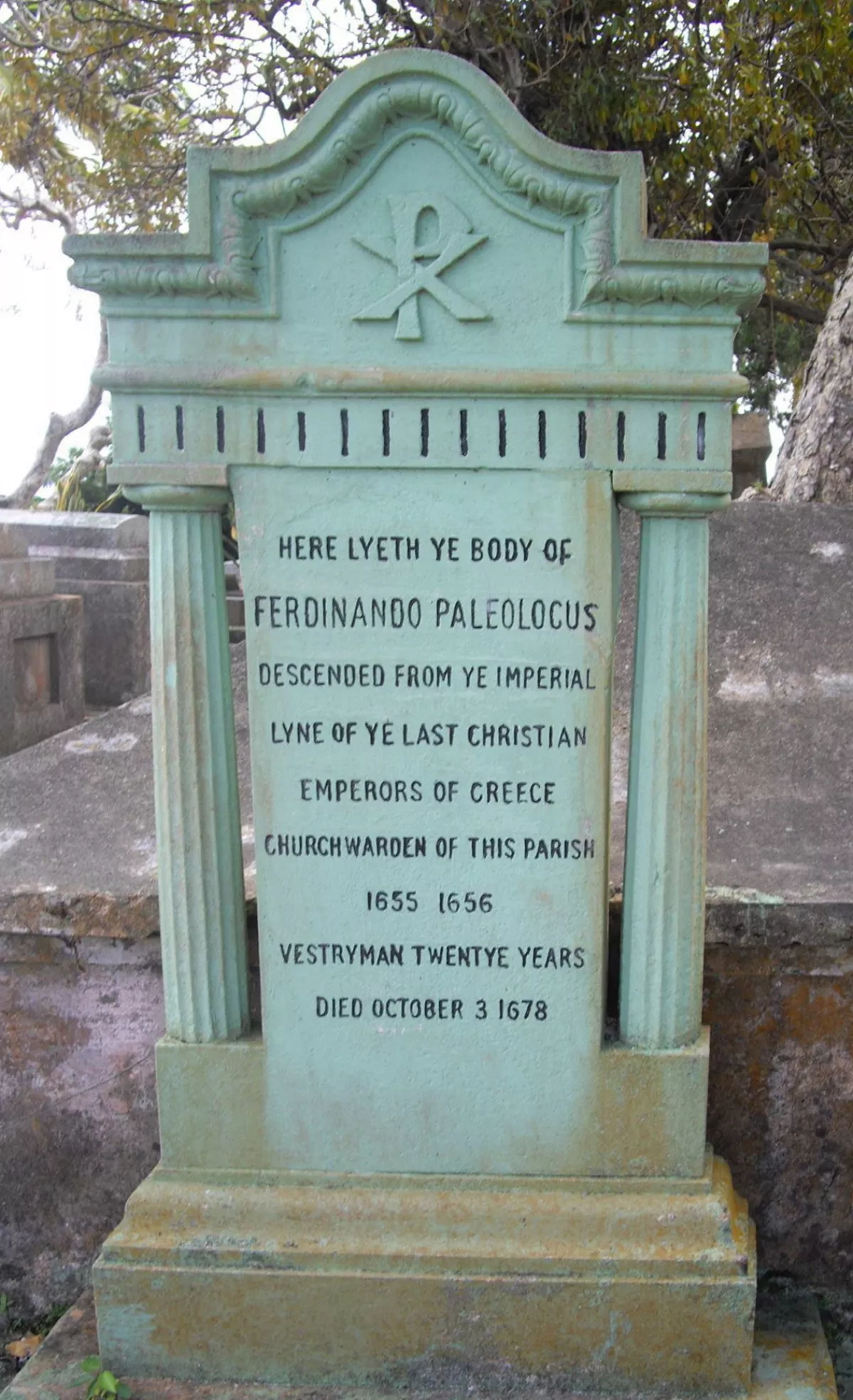 1.
1. Ferdinand Paleologus was a 17th-century English-Greek freeholder, sugar or cotton planter and churchwarden and possibly one of the last living members of the Palaiologos dynasty, which had ruled the Byzantine Empire from 1259 to its fall in 1453.